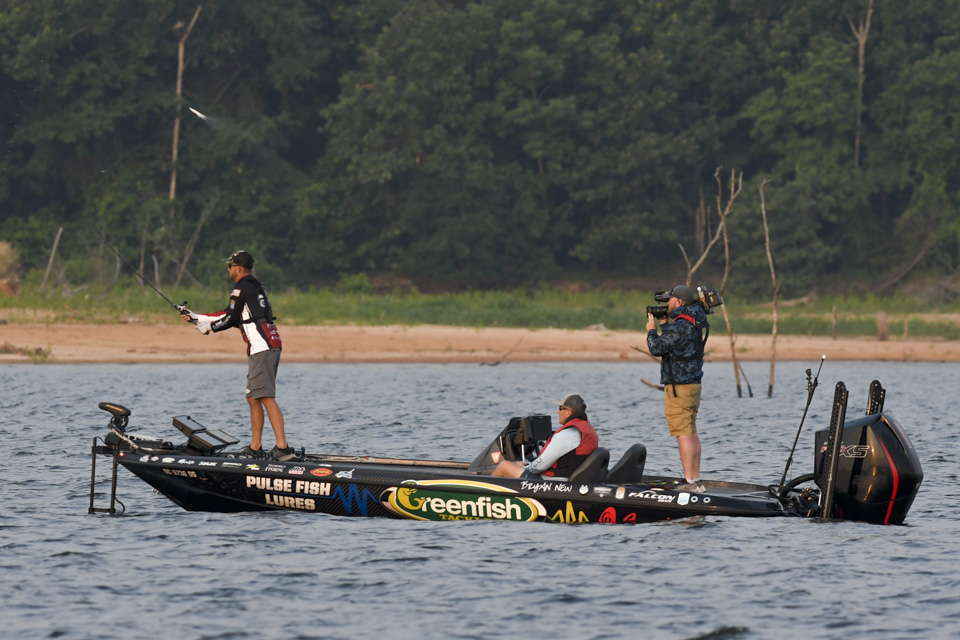
ANDERSON, S.C.– The 2022 Abu Garcia Bassmaster High School Championship presented by Academy Sports + Outdoors is underway at Lake Hartwell and one of the common pieces of cover teams will be targeting are the thousands of man-made cane piles scattered throughout the South Carolina reservoir.
Bassmaster Elite Series champion Bryan New has spent an extraordinary amount of time fishing Lake Hartwell and has learned all about these unique features. At this point, the South Carolina pro recognizes the cane pile secret isn’t really a secret any more.
“Typically the places where there are cane piles, which is just about every point on the lake, more often than not you have a good chance of fish being around,” New said. “One misunderstood thing is, the cane pile fish will hang around it, but at the same time if you take the cane pile away it is still a good place but they roam more.”
While the secret is out, New sees that anglers get confused on some of the characteristics that make cane piles attractive to bass.
For one, cane piles are not the same as brush piles. Brush piles tend to be much larger and wider than cane piles and the bass will bury themselves in the brush. Cane piles serve a much different purpose.
“A lot of people will call cane piles brush, but it’s not. A cane pile stands straight up. Years ago when the cane pile deal first started, it was because they were catching fish over timber. The trees stand straight up and typically a lot of the trees in Hartwell, they aren’t big and bulky and have a ton of limbs. Most of that stuff has rotted off over the years. You’ll have the trunk and a handful of limbs sticking out.”
With a weight at the bottom and cane sticking up vertically, the cane piles are lowered into the water and serve the same purposes as a natural tree would. New said the bottom of these piles sit between 18 and 28 feet of water, but top out in 5 to 12 feet.
“The cane pile isn’t that big at its widest point. For the most part, the fish are suspending next to it or above it,” he explained. “You may be sitting in 40 feet of water casting into 30, but you are only fishing 10 or 12 feet of water because that is where the bass are actually sitting.”
Both largemouth and spotted bass use these cane piles and baits like flukes, topwaters and drop shots are effective around these areas.
New added if you aren’t catching bass in the cane pile itself, you can fish around the rest of the point and likely find a group of nomadic fish that are honing in on Blueback herring.
“You’ll have a group of fish relating to the cane pile and then a group of fish that are more of the nomadic herring chasers,” New said. “One is spots and one is largemouth. Spots and largemouth use the same places, but typically they aren’t mixed together.”

